The Spaniard in the Works (part 3)
I looked at the Wikipedia page that had so impressed me, translated from the Spanish, and had another thought. Was it like that at the start or was it turned that way by an event or series of events? I opened the history screen and ascertained that a large number of amendments were made in and around May of 2010, including the link at the foot of the page to the 'manifiesto'. Furthermore, the amendments invariably give this book as their source:
 Santiago García's La Novela Gráfica was released at the end of March last year. It came from the same publisher as my own books, Astiberri, and I found myself sitting next to Santiago briefly at their signing table in Barcelona. I scanned the pages of his book and was pleased to take away a copy, But I didn't realize, until I got it home, that this is the one book on the subject that I would have loved to have written myself. Without getting caught up in foolish arguments about what a graphic novel is supposed to be, García illuminates the more progressive features of the present day comics environment and explains what makes these different from the situation that prevailed previously. These features are, essentially, respect for the voice of an author, a long view of the history of the medium, a bid for wider recognition in the cultural landscape and a community that reaches across international boundaries.
Santiago García's La Novela Gráfica was released at the end of March last year. It came from the same publisher as my own books, Astiberri, and I found myself sitting next to Santiago briefly at their signing table in Barcelona. I scanned the pages of his book and was pleased to take away a copy, But I didn't realize, until I got it home, that this is the one book on the subject that I would have loved to have written myself. Without getting caught up in foolish arguments about what a graphic novel is supposed to be, García illuminates the more progressive features of the present day comics environment and explains what makes these different from the situation that prevailed previously. These features are, essentially, respect for the voice of an author, a long view of the history of the medium, a bid for wider recognition in the cultural landscape and a community that reaches across international boundaries.
García is in line with my own view of seeing the entirety of comics in terms of phases rather than simply format choices. (In the so-called manifesto I suggested "a movement, or an ongoing event" with the intention of placing it in time rather than in physical material). Or if they coexist, then they do so in the way that generations live together in a family. Artist Pepo Perez explained the idea visually in an arrangement of Photos recently showing, in turn, the newspaper strip, the comic book, la novela gráfica.
The previous phase of comics, which still continues, trying to adapt to changing times like Grandad wearing the new fashions, was commanded by corporations who assigned replaceable writers, artists and other team members to maintain their properties, or characters. In the new phase the artist seeks the kind of autonomy customarily enjoyed by a literary author.
A healthy respect for the history of the medium has resulted in a developing library of the classic comics of all time. A former appreciation of the past tended to be myopic; the former 'golden age' began around 1939. A new appreciation however has made available at last an English language collection of the complete works of Toepffer in an appreciatively bound hardcover. The contents go back over a hundred years before that date.
The bid for wider recognition has resulted not only in the winning of prizes never before within the reach of a comic book practitioner, but has also seen the cultivation a more universal subject matter, the very stuff, and all of it, of our own life and times.
The authors of this growing body of work hail from and live in all the corners of the planet. A brief sampling would give us Chris Ware in the USA, Chester Brown in Canada, Marjane Satrapi from Iran and living in Paris, Shaun Tan in Australia, Lat in Malaysia, Taniguchi in Japan. Where previously there were comics, bande dessinee, fumetti, tebeo, manga, each country with its own separate tradition, the new option gives us the graphic novel, la novela gráfica, romanza grafico, roman graphique, powieść graficzna. Think about that. For all that you probably thought that the term was lousy, did it occur to you that it is actually, accidentally probably, a very useful international term that ends up sounding recognizably similar wherever it lands?
García keeps the picture rigorously lucid. The ideas are thrilling, something you'd like to be a part of. The book was universally cheered, flowers were thrown in front of the author's feet and his countrymen thanked him profusely.
well, kind of, but
God no.
(continued in part 4. meanwhile, here I am with the author in Barcelona, photo pinched from Entrecomics) (santiago's blog)

 Santiago García's La Novela Gráfica was released at the end of March last year. It came from the same publisher as my own books, Astiberri, and I found myself sitting next to Santiago briefly at their signing table in Barcelona. I scanned the pages of his book and was pleased to take away a copy, But I didn't realize, until I got it home, that this is the one book on the subject that I would have loved to have written myself. Without getting caught up in foolish arguments about what a graphic novel is supposed to be, García illuminates the more progressive features of the present day comics environment and explains what makes these different from the situation that prevailed previously. These features are, essentially, respect for the voice of an author, a long view of the history of the medium, a bid for wider recognition in the cultural landscape and a community that reaches across international boundaries.
Santiago García's La Novela Gráfica was released at the end of March last year. It came from the same publisher as my own books, Astiberri, and I found myself sitting next to Santiago briefly at their signing table in Barcelona. I scanned the pages of his book and was pleased to take away a copy, But I didn't realize, until I got it home, that this is the one book on the subject that I would have loved to have written myself. Without getting caught up in foolish arguments about what a graphic novel is supposed to be, García illuminates the more progressive features of the present day comics environment and explains what makes these different from the situation that prevailed previously. These features are, essentially, respect for the voice of an author, a long view of the history of the medium, a bid for wider recognition in the cultural landscape and a community that reaches across international boundaries.García is in line with my own view of seeing the entirety of comics in terms of phases rather than simply format choices. (In the so-called manifesto I suggested "a movement, or an ongoing event" with the intention of placing it in time rather than in physical material). Or if they coexist, then they do so in the way that generations live together in a family. Artist Pepo Perez explained the idea visually in an arrangement of Photos recently showing, in turn, the newspaper strip, the comic book, la novela gráfica.
The previous phase of comics, which still continues, trying to adapt to changing times like Grandad wearing the new fashions, was commanded by corporations who assigned replaceable writers, artists and other team members to maintain their properties, or characters. In the new phase the artist seeks the kind of autonomy customarily enjoyed by a literary author.
A healthy respect for the history of the medium has resulted in a developing library of the classic comics of all time. A former appreciation of the past tended to be myopic; the former 'golden age' began around 1939. A new appreciation however has made available at last an English language collection of the complete works of Toepffer in an appreciatively bound hardcover. The contents go back over a hundred years before that date.
The bid for wider recognition has resulted not only in the winning of prizes never before within the reach of a comic book practitioner, but has also seen the cultivation a more universal subject matter, the very stuff, and all of it, of our own life and times.
The authors of this growing body of work hail from and live in all the corners of the planet. A brief sampling would give us Chris Ware in the USA, Chester Brown in Canada, Marjane Satrapi from Iran and living in Paris, Shaun Tan in Australia, Lat in Malaysia, Taniguchi in Japan. Where previously there were comics, bande dessinee, fumetti, tebeo, manga, each country with its own separate tradition, the new option gives us the graphic novel, la novela gráfica, romanza grafico, roman graphique, powieść graficzna. Think about that. For all that you probably thought that the term was lousy, did it occur to you that it is actually, accidentally probably, a very useful international term that ends up sounding recognizably similar wherever it lands?
García keeps the picture rigorously lucid. The ideas are thrilling, something you'd like to be a part of. The book was universally cheered, flowers were thrown in front of the author's feet and his countrymen thanked him profusely.
well, kind of, but
God no.
(continued in part 4. meanwhile, here I am with the author in Barcelona, photo pinched from Entrecomics) (santiago's blog)

Labels: The Spaniard in the works
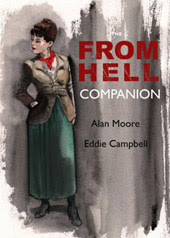
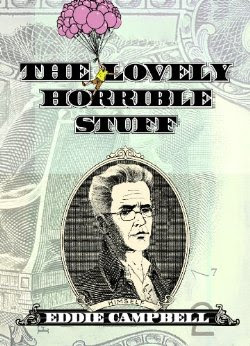

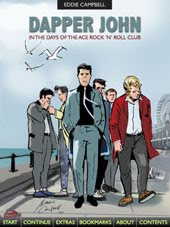
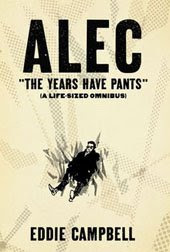
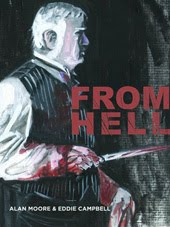
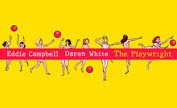
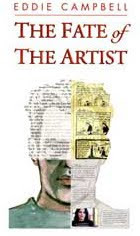

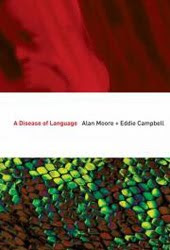
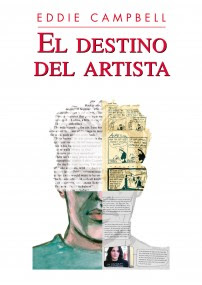
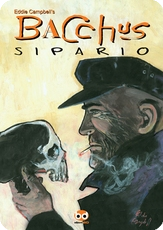
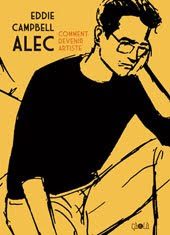

0 Comments:
Post a Comment
Subscribe to Post Comments [Atom]
<< Home